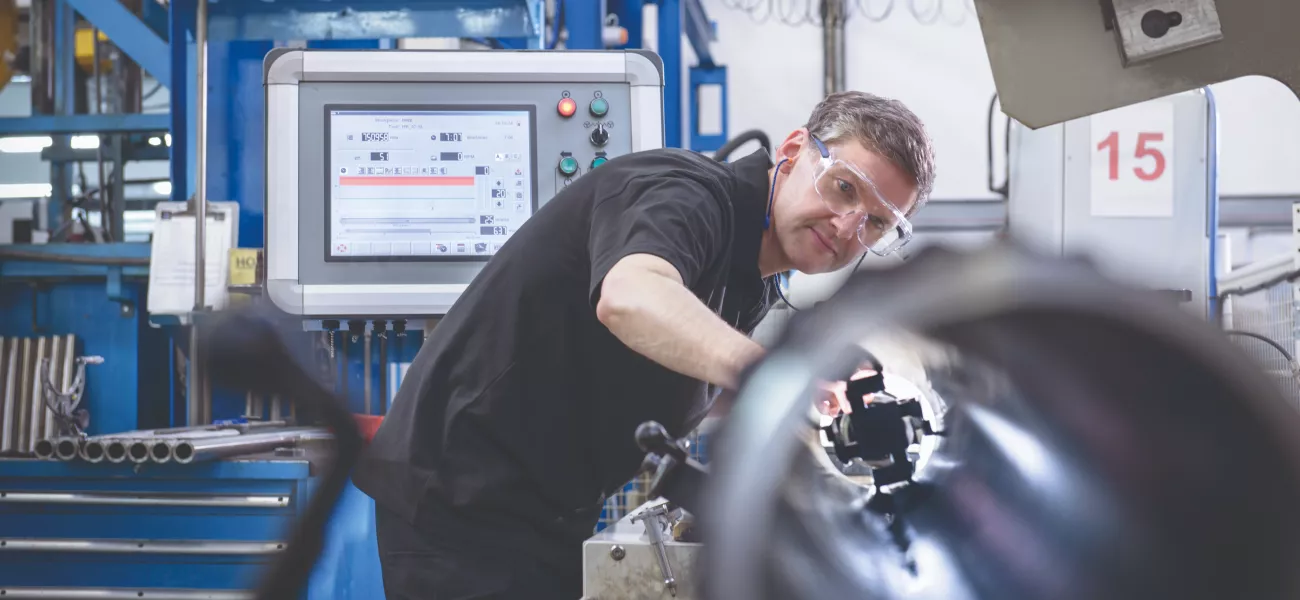
Manufacturing is a complex business, and manufacturing plants feature a number of areas of potential security risk and health and safety guidelines to adhere to.
There are many areas of a manufacturing business where video can play a valuable role: from the car park, to entrances and exits, office areas, delivery and dispatch and, of course, the manufacturing and assembly areas themselves. Delivery of raw materials, storage and dispatch of valuable product, operation of machinery, and areas open to only authorized personnel all represent aspects of a manufacturing organization where video surveillance and related technologies can be employed.
In broad terms, the benefits of video surveillance to manufacturers are:
- Security of the business, machinery and product
- Safety of employees and site visitors
- Monitoring of the manufacturing process
- Optimization of business processes
End-to-end security
Security is paramount for any business, and for a manufacturer – where plant and machinery, raw materials and the finished product all have significant value – it is of critical concern. Effective perimeter protection, alerting security personnel to breaches, intruders and suspicious behavior, is a must-have to protect the first line of site security.
By their nature, however, manufacturing businesses have a steady flow of legitimate non-employees visiting the site. Effective access control, whether in the car park and via the front door or through delivery and dispatch bays, is therefore vital. In addition, even among employees themselves, some will be authorized to enter specific areas of the facility and some not. Door stations with integrated video and audio will enable verification and, if necessary, challenge to unauthorized personnel.
Ensuring employee safety
While every effort can be taken to minimize the likelihood of accidents in the workplace, they are an unfortunate fact of working life in all organizations. Given the nature of the environment, such incidents can be particularly serious in industrial sites, manufacturing facilities and factories. Work-related injuries and illness also carry a huge cost.
Video surveillance can help to reduce the cost of accidents, where video from surveillance cameras can be used in post-incident investigation and identify whether responsibility lies with the employer, or the employee. Wherever ultimate responsibility may lie, the video can allow the organization to take action to ensure that it doesn’t occur again, through more visible signage, protective barriers or new machinery.
However, it is both the employer’s and employee’s interests to prevent accidents and incidents happening in the first place, and this is where an unseen benefit of video surveillance comes into play. Similar to overt video surveillance being a deterrent to thieves, cameras visible in manufacturing facilities can ensure that employees adhere to all appropriate health and safety guidance. Indeed, experiments for decades have shown that humans unknowingly behave better when they think they’re being watched, even if this perception is only prompted by a pair of eyes on a poster! So, it’s logical that where workers know that video surveillance is in operation, they will adhere to rules and regulations in relation to safe working practices.
Monitoring production and optimizing operations
Any manufacturing facility will rely on maximized production, and any failure of machinery will have a serious impact on output, leading to dissatisfied customers and reduction in profitability. Video surveillance can monitor the overall production process, while additional technologies such as thermal imaging can highlight potential issues (such as machines overheating) so that proactive action can be taken ahead of a failure. Video analytics can also be used to study the flow of people and product throughout the manufacturing plant, highlighting areas where small changes can result in big improvements in efficiency.
Respecting workers’ rights
It is important to note that while video surveillance in the workplace has numerous benefits and all represent legitimate reasons to use video surveillance, employees still have certain rights in relation to the video captured. This has become increasingly relevant since the EU General Data Protection Regulations (GDPR) have been implemented. This article provides a good overview of the specific impact of GDPR on workplace surveillance.
The multiple benefits of video surveillance – whether visible or unseen - are more accessible than they have ever been, to a broader range and size of businesses. Read more about the top considerations when specifying a video surveillance solution here.
